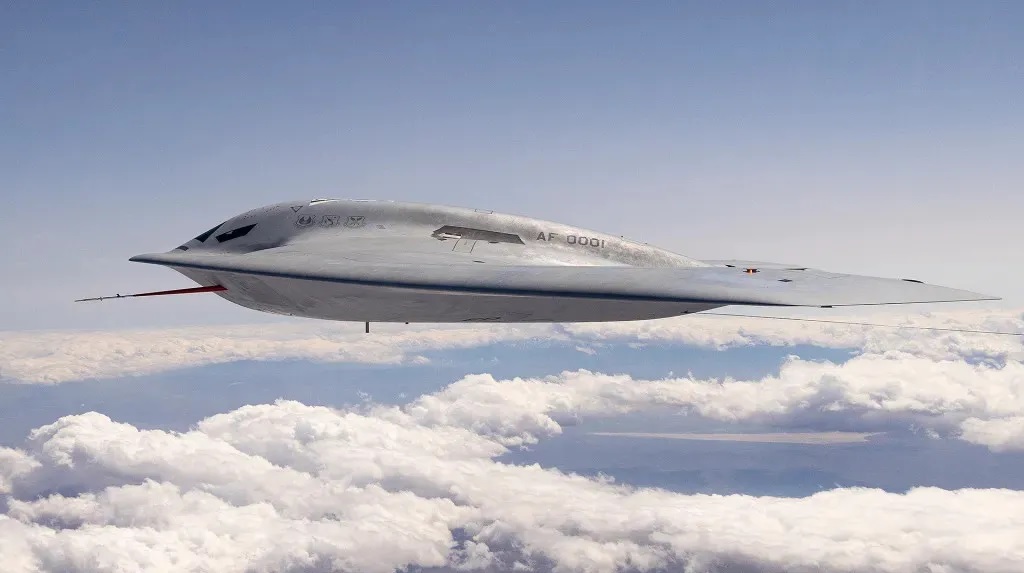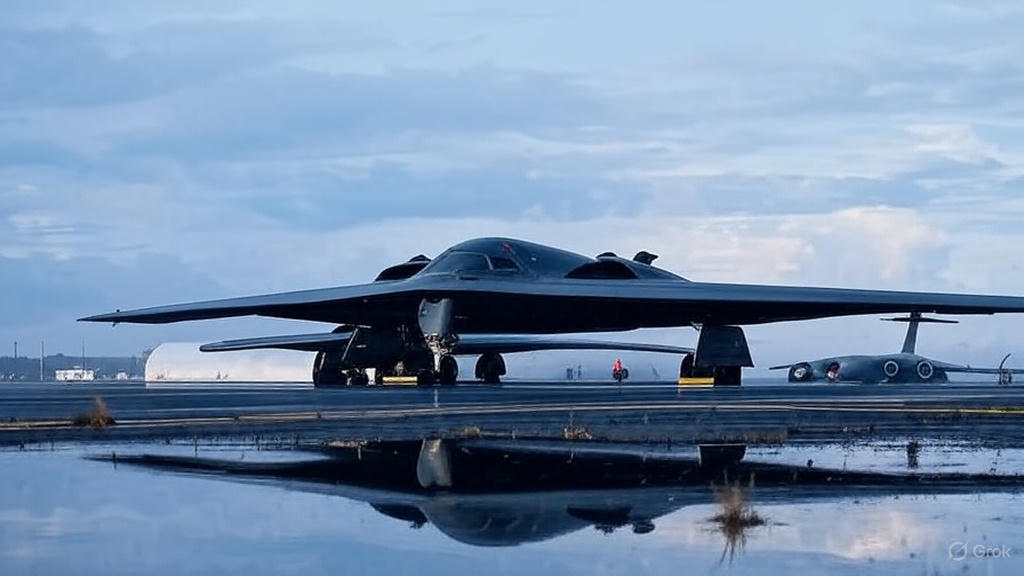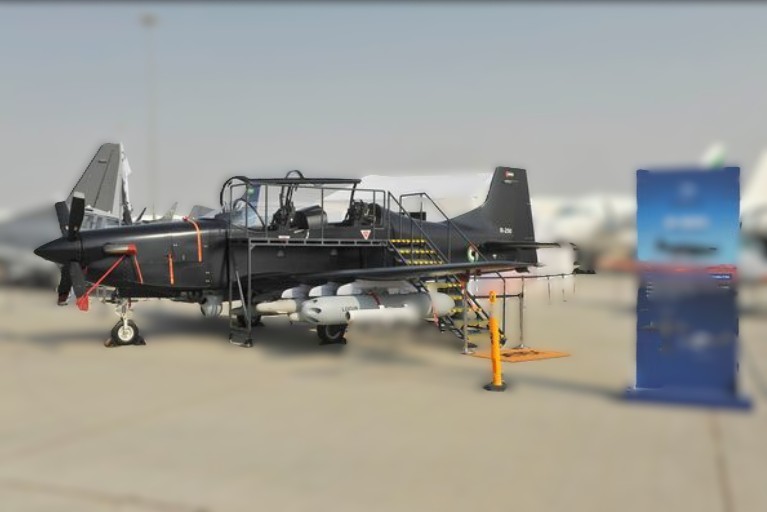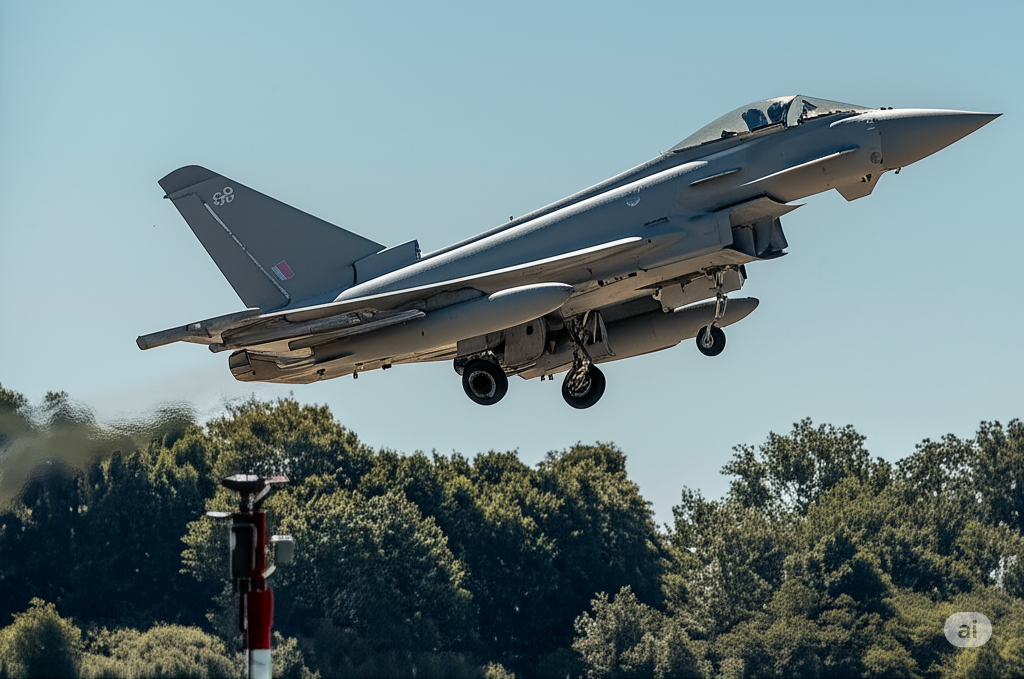In the ever-evolving landscape of modern warfare, where technological superiority often dictates the outcome of conflicts, the U.S. Air Force is placing a renewed emphasis on an age-old principle: strength in numbers. This sentiment was powerfully articulated by Maj. Gen. Jason Armagost, the commander of the Eighth Air Force and overseer of the Joint-Global Strike Operations Center at Barksdale Air Force Base in Louisiana. During a recent online discussion hosted by the Air & Space Forces Association’s Mitchell Institute for Aerospace Studies, Armagost highlighted the transformative potential of the B-21 Raider stealth bomber, not merely for its cutting-edge features but primarily for the substantial fleet size planned for its deployment. As the Air Force transitions from its aging fleet of B-2 Spirit bombers, which have proven invaluable yet limited by their scarcity, the B-21 emerges as a pivotal asset in ensuring sustained operational capability across global theaters.
The B-21 Raider, developed under the auspices of the Air Force Rapid Capabilities Office in collaboration with Northrop Grumman, represents a quantum leap in bomber technology. Currently in flight testing with the first pre-production model already airborne and a second expected to join shortly, the program is progressing steadily. At least four additional aircraft are in various stages of assembly, complemented by non-flying test airframes that support rigorous evaluation processes. The Air Force’s baseline plan calls for procuring at least 100 of these advanced bombers, with influential voices within the military advocating for an expansion to 145 units. This ambition underscores a strategic shift away from the pitfalls experienced with the B-2, of which only 19 remain operational today—a fraction of the originally envisioned 132 or even the initial 165 under the Advanced Technology Bomber program.
Armagost’s enthusiasm stems from his prior involvement in shaping the B-21’s development, where he interfaced with acquisition teams, the Rapid Capabilities Office, and Northrop Grumman to refine concepts, requirements, and production strategies. He emphasized that while the sixth-generation stealth attributes of the B-21—such as broadband low-observable design that minimizes radar detection across multiple frequencies—offer remarkable individual capabilities, it is the ability to field them en masse that truly revolutionizes air power. “That’s what I’m most excited about,” Armagost stated, pointing to the prospect of constructing a “campaign force” capable of sustained, multifaceted operations rather than isolated strikes.
To appreciate this perspective, one must consider the recent Operation Midnight Hammer, a high-profile mission that targeted Iranian nuclear facilities and demonstrated both the prowess and constraints of the current bomber fleet. In this operation, seven B-2 bombers, crewed by 14 aviators, executed a prolonged global power mission, penetrating deeply defended airspace to deliver precision strikes using the 30,000-pound GBU-57/B Massive Ordnance Penetrator for the first time in combat. This bunker-busting weapon, designed to neutralize hardened underground targets, exemplified the B-2’s unique role in holding adversaries’ most fortified assets at risk. However, the operation involved far more than those seven aircraft; a total of 125 platforms were mobilized, including tankers for aerial refueling, electronic warfare assets, and decoy operations in the Pacific to mislead potential observers. This elaborate orchestration highlighted the systemic effort required to support such missions, yet it also exposed vulnerabilities inherent in a small fleet.
With only 19 B-2s available—reduced from 21 due to accidents in 2008 and 2022—the Air Force committed over a third of its stealth bomber inventory to Midnight Hammer, not accounting for maintenance-down aircraft or those held in reserve. As noted by defense analyst Tyler Rogoway, nearly the entire operational B-2 force was engaged, factoring in Pacific decoys and routine depot cycles. This concentration of resources raises critical questions about sustainability: Could the Air Force replicate such an effort repeatedly in a protracted conflict, such as a hypothetical confrontation with China in the Indo-Pacific? The B-2’s maintenance-intensive nature further compounds this issue, as availability rates fluctuate, demanding extensive ground support and specialized facilities.
In contrast, the B-21 is engineered with affordability, sustainability, and producibility at its core. Smaller than the B-2, it sacrifices some payload capacity per sortie but gains in efficiency, particularly through an optimized airframe for high-altitude, long-range flight and advanced engines that reduce fuel consumption and tanker dependency. This design philosophy balances proven technologies with innovative advancements, ensuring the program adheres to schedule and budget constraints—a departure from historical overruns in stealth aircraft development. Beyond bombing, the Raider integrates as a multifaceted platform: a node for networking, battle management, electronic warfare, and intelligence, surveillance, and reconnaissance (ISR). It could even orchestrate uncrewed aerial vehicles in future operations, extending its reach without additional manned risk.
Armagost elaborated on the broader implications, envisioning a fleet that enables “campaign tempo”—the ability to maintain continuous pressure across multiple fronts. With sufficient numbers, the B-21 force could diversify munitions loads, offering commanders a spectrum of options from precision-guided strikes to hypersonic weapons integration. This versatility forces adversaries to reassess their defensive investments, as a large, dispersed fleet complicates targeting and denial strategies. For instance, in a contested environment like the South China Sea, B-21s could operate from dispersed bases, leveraging their extended unrefueled range to minimize vulnerability to anti-access/area-denial (A2/AD) systems.
The discussion also touched on the Long-Range Strike (LRS) family of systems, of which the B-21 is a cornerstone. This classified ecosystem includes the nuclear-armed Long Range Stand Off (LRSO) cruise missile, whose first public rendering was released earlier this year, and potentially other elements like advanced sensors or collaborative combat aircraft. Armagost briefly referenced the forthcoming F-47 sixth-generation fighter as a complementary asset, suggesting an integrated “campaign force” that combines stealth bombers with next-gen fighters for layered penetration and dominance.
Nuclear deterrence remains a paramount concern, with Armagost stressing the need for resilience in the “worst day” scenarios—those involving space-based attacks, electromagnetic pulses, or degraded communications. Bombers like the B-21 provide a flexible leg of the nuclear triad, capable of recallable strikes unlike silo-based missiles. The emphasis on “organic kill chains” ensures that even in isolated conditions, the aircraft can navigate, target, and execute missions autonomously, bolstering deterrence by guaranteeing response capability.
Historically, the post-Cold War “peace dividend” nearly eradicated the B-2 program, trimming ambitions from hundreds to mere dozens. Armagost described the survival of 19 aircraft as “somewhat miraculous,” underscoring the risks of underinvestment. Operation Midnight Hammer, which led to a ceasefire within 30 hours, illustrated success but also fragility; sustained operations demand redundancy. The B-21 addresses this by prioritizing producibility, with Ellsworth Air Force Base in South Dakota slated as the first operational hub, replacing B-1 Lancers by decade’s end. Pre-production test aircraft may transition to frontline duty, accelerating fleet buildup.
Looking ahead, the Raider’s lower maintenance demands and higher reliability will facilitate persistent forward presence, reducing predictability and enhancing strategic ambiguity. In exercises like the April 2024 mass fly-off at Whiteman Air Force Base, where 10 B-2s demonstrated collective power, one glimpses the potential of scaled-up operations. For the B-21, multiplying this by factors of five or more could redefine air superiority.
Yet, challenges persist. Budgetary pressures, supply chain vulnerabilities, and geopolitical shifts could impact procurement goals. Advocates for 145 units argue that anything less risks repeating the B-2’s limitations, especially as peer competitors like China expand their air defenses and hypersonic arsenals. The Air Force must navigate these hurdles while integrating the B-21 with emerging technologies, such as artificial intelligence for autonomous decision-making or directed energy weapons for self-defense.
Armagost’s vision extends beyond hardware to the human element: training crews for diverse scenarios, fostering inter-service collaboration, and ensuring logistical support chains are robust. The Eighth Air Force, responsible for B-1, B-2, and B-52 operations, serves as the vanguard, with J-GSOC coordinating global strikes. As the B-21 enters service, it will phase out the B-1s—over 40 remain—and eventually the B-52s, modernizing the bomber force for 21st-century threats.

In essence, the B-21 Raider embodies a paradigm where quantity amplifies quality. Its stealth, range, and multifunctionality are potent, but deployed in numbers, they create an overwhelming force multiplier. As global tensions simmer—from Middle Eastern flashpoints to Pacific rivalries—the U.S. Air Force’s commitment to a substantial Raider fleet signals a proactive stance in safeguarding national security. Maj. Gen. Armagost’s insights remind us that in aviation warfare, the true measure of power lies not just in the sophistication of a single aircraft, but in the collective might of a fleet ready to respond at scale.
This evolution reflects broader trends in military strategy, where distributed operations and resilience trump centralized, high-value assets. The B-2’s legacy, forged in operations from Kosovo to Afghanistan and now Midnight Hammer, paves the way, but the B-21 promises to eclipse it through sheer volume. Analysts predict that by the 2030s, Raiders could form the backbone of long-range strike missions, integrating with allies’ platforms for coalition warfare.
Critics, however, caution against overreliance on stealth, noting advancements in quantum radars and hypersonic interceptors that could challenge low-observable designs. The Air Force counters this by emphasizing the B-21’s evolutionary adaptability, with modular systems allowing upgrades without full redesigns. Cost control remains key; the program’s focus on mature technologies mitigates risks that plagued predecessors like the F-35.
Operation Midnight Hammer also spotlighted international ramifications. The strikes on Iran, while achieving tactical objectives, underscored the need for diplomatic parallelism. Armagost noted the rapid ceasefire, but warned against assuming such outcomes, advocating for preparedness in multi-domain conflicts.
For the aviation community, the B-21 heralds exciting developments. Its efficient engines, derived from commercial derivatives, promise reduced lifecycle costs, while advanced composites enhance durability. Pilots anticipate enhanced cockpits with augmented reality displays, streamlining mission execution.
In nuclear contexts, the Raider strengthens triad synergy with submarines and ICBMs, ensuring mutually assured destruction remains a deterrent. Armagost’s “worst day” preparedness resonates amid rising cyber threats and space militarization.
As production ramps up, Northrop Grumman’s facilities in California hum with activity, employing thousands in high-tech jobs. This economic ripple effect bolsters domestic manufacturing, aligning with national security imperatives.
Ultimately, Maj. Gen. Armagost’s message is clear: the B-21’s success hinges on numbers. A fleet of 100-plus Raiders will enable campaign-level operations, deterring aggression and projecting power globally. As the first operational squadrons form at Ellsworth, the era of quantity-driven air dominance dawns, securing America’s skies for generations.
Delving deeper into historical context, the B-2’s development in the 1980s under Ronald Reagan’s administration aimed to counter Soviet air defenses, incorporating flying-wing design inspired by Jack Northrop’s earlier concepts. The program’s secrecy, revealed in 1988, captivated the public, but cost escalations—each B-2 exceeding $2 billion—led to curtailment amid post-Soviet budget cuts. Bill Clinton’s administration slashed orders, reflecting shifting priorities toward precision munitions over massive platforms.
The B-21, conversely, learns from this, targeting a per-unit cost of around $550 million (in 2010 dollars), adjusted for inflation. This affordability stems from digital engineering, where virtual prototyping reduces physical testing needs, accelerating development. Northrop Grumman, leveraging B-2 experience, incorporates open architecture for easier integrations, future-proofing the aircraft against evolving threats.
Technically, the Raider’s stealth derives from advanced materials absorbing radar waves, coupled with edge alignment minimizing reflections. Its engines, likely Pratt & Whitney derivatives, optimize subsonic efficiency for ranges exceeding 6,000 nautical miles, allowing transpacific flights without refueling. This reduces tanker vulnerability, a critical factor in A2/AD environments where adversaries target support assets.
Payload-wise, while smaller than the B-2’s 40,000-pound capacity, the B-21 can carry a mix of JDAMs, JASSMs, and potentially hypersonics like the ARRW, enhancing versatility. ISR suites include synthetic aperture radars and electro-optical sensors, enabling real-time intelligence gathering.
In crew terms, the two-pilot configuration, similar to the B-2, emphasizes automation to reduce workload, with AI assisting in threat detection and route planning. Training simulators, already in use, prepare aircrews for contested scenarios.
Geopolitically, the B-21 counters China’s J-20 fighters and DF-17 missiles, providing penetration capabilities for strikes on mainland targets. In Europe, it deters Russian aggression, supporting NATO with rapid response.
Maintenance innovations, like predictive analytics, anticipate failures, boosting sortie rates. Bases like Dyess and Whiteman will follow Ellsworth in hosting Raiders, dispersing the fleet for survivability.
Environmental considerations include lower emissions from efficient engines, aligning with sustainability goals.
Critiques from arms control advocates argue for reduced nuclear reliance, but proponents highlight deterrence value in an era of great power competition.
As testing progresses, milestones like weapons separation tests loom, paving the way for initial operational capability.




